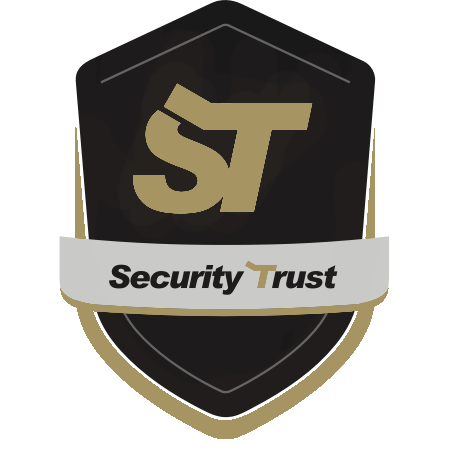Integrated Safety Systems for Companies
Factories, production sites and warehouses often contain valuable raw materials and goods necessitating continuous monitoring.
The most common risks are theft, intrusions, assaults and industrial espionage. These may affect the efficiency of corporate management, cause significant economic damage and have an impact on the productivity of companies.

Anti-intrusion systems for industrial sites
The safety of these very critical sites is guaranteed through design, planning, installation, putting into service and maintenance of anti-intrusion and burglar alarm systems in compliance with the relevant CEI 79-3 and CEI EN 50131-1 Standards.
Before designing the system, possible threats and risks are analyzed. The costs of possible thefts and damage as well as the location of the real estate, the presence of controlling workforces and the history of previous thefts or threats are taken into consideration.
For industrial sites we usually offer protection including the monitoring of access points, surfaces and volumes with an external perimeter protection of the industrial site, including fences and areas not built on. We also take the topography and the use of nearby areas into account.
During the design phase we evaluate the possibility of protecting special areas inside the perimeter containing assets which may be of particular importance for the Company.
A second barrier protects internal buildings and rooms. As these are high-risk areas, protection is provided not only at access points such as doors and windows, but also on the perimeter walls which are provided with breakthrough detection systems and scanner radars sensors based on the measurement of the flight time in order to protect glass partitions, roof windows and “smoke outs” on roofs.
For rooms requiring a higher degree of safety, such as DPCs, servers and safes, ad-hoc multi-technology systems with smoke dischargers preventing thieves from completing their theft and from damaging the building are used.
Video Surveillance Services for Companies
Pursuant to the CEI EN 62676 Standard, before designing an industrial video surveillance system we carry out an analysis of the specific requirements of the industrial site and identify which areas require not only visual monitoring limited to the storage of images, but also active filming and detecting of incidents by means of the following:
- automatic real time notification in the case of access into a specific area, with pop-ups, video confirmation and location of the point of interest on the map
- tracking the object of interest by means of an auto-tracking function
- detection of the area by means of thermal video cameras and intelligent video-analysis functions processing images by means of “trespassing” algorithms
- extremely “user friendly “ solutions which make the system easy to use for operators
Within industrial contexts video cameras do not only protect buildings and people, but are useful tools to:
- create a safe environment for employees: it is possible to control and monitor the observance of safety standards and correct use of the tools and devices made available to employees.
- More efficient processes and higher productivity: production lines can be controlled remotely and correct execution of functions and processes are analyzed visually and kept under control. Very often it is possible to solve problems through remote technical assistance and this reduces the times and costs of on-site maintenance.
Access Control and Presence Detection Systems for Industrial sites
Large companies working on a domestic and international level need to have different access levels for different categories and offices.
It is sometimes crucial that only authorized persons have access to certain areas. This guarantees the reliability of the whole production process and increases the level of safety against possible internal and external attacks.
In general, full-height turnstiles for personnel are provided at pedestrian access points and vehicle barriers with RFID recognition systems are provided for cars and articulated vehicles.
The access control systems offered for industrial sites guarantee the following:

- higher safety level against internal/external/visitor’s attacks: internal and external areas are compartmentalized and gate access levels are assigned depending on the title, day, time band etc.
- more flexible access through the use of new identification technologies and access by smart-phone using BLE, NFC and QR codes;
- multi-site centralized management using platforms whose number may be increased (number of users and terminals) depending on the corporate requirements without any impact on system operation.
- dematerialization: the documentation concerning privacy and safety measures may be viewed without using paper. Tablets are used for the graphometric signature;
- management of electronic key hanging boards: authorization to collect the keys and possibility to return them directly through the access control system. The objective of this process is being able to trace the keys and preventing those who have not returned them from leaving.
- Detection of the presence of employees when processing payrolls by means of dedicated terminals for clock in and clock out reading. As an alternative, it is possible to use access control terminals and interface them with pre-existing systems used for processing payrolls.
- Vehicle transit control by means of registration number reading systems, UHF electronic toll collection and APP-BLE systems as well as control pedestrian access control. This function applies to all those who have access to the site (employees, external companies, visitors).
- Better safety: calculation of the number of people in charge of first aid and fire-fighting or control of the safety data to allow external teams to have access the building site.
- Retrospective tracking of incidents for security and statistic purposes.
- Collection and analysis of strategic information for the purpose of corporate analyses and strategies: man hours, Company division and cost centre
- Electronic door keeping: semi-automatic reception based on time bands and remote access control for unattended gates using IP video intercom systems.
Fire detection systems for Companies
Business continuity in the industrial sector is a priority. Interruptions in the data flow can cause very significant losses and damage the image of a Company.
When there is a fire outbreak, a system capable of alerting at an early stage makes it possible to secure the contents of a building. The purposes of the smoke detection system can be summarized as follows:
01detecting a possible fire outbreak in the shortest time possible
02helping in rapid evacuation and goods removal


Implementation of intervention plans 03
Implementation of protection systems against fire and further safety measures 04
The design, installation, putting into service, operational control and maintenance of smoke detection systems in the industrial sector take place in compliance with the UNI 9795, UNI EN54 and UNI 11224 Standards.
The choice of the detection technology depends on the specific requirements of a certain site. In large logistic areas or warehouses it is often possible to combine several technologies by using linear barriers, point sensors, air analysis chambers and suction systems based on LASER technology to detect smoke particles inside the air taken from the pipelines.
For safeguarding the goods contained in particularly critical rooms, such as the control room, UPS rooms and SERVER or EDP rooms, we offer a switching off system with dedicated central units in compliance with the EN 12094-1:2003 Standard. This system is capable of managing output modules for activation purposes and input modules for signaling possible failures and/or for the disablement of rooms.